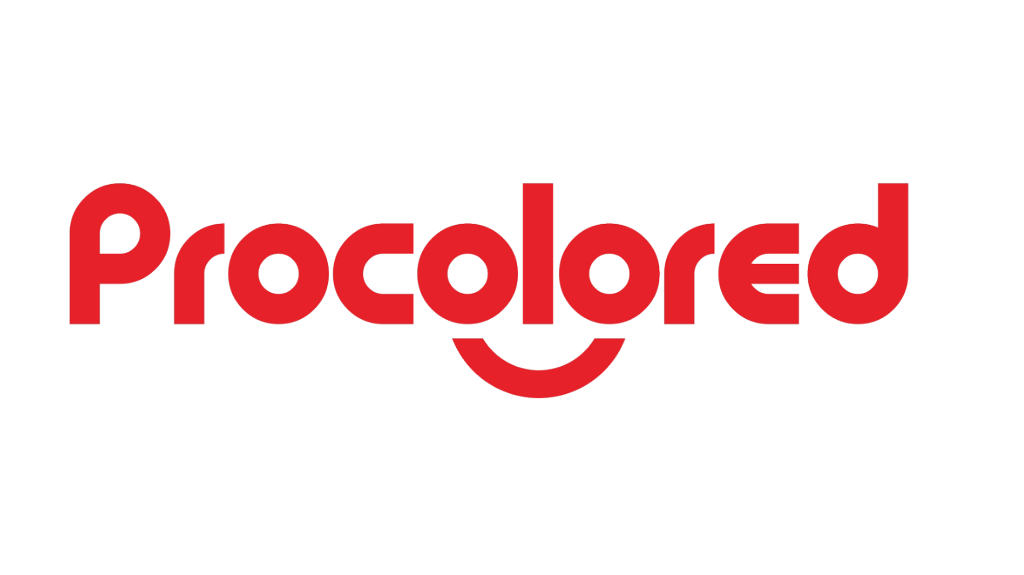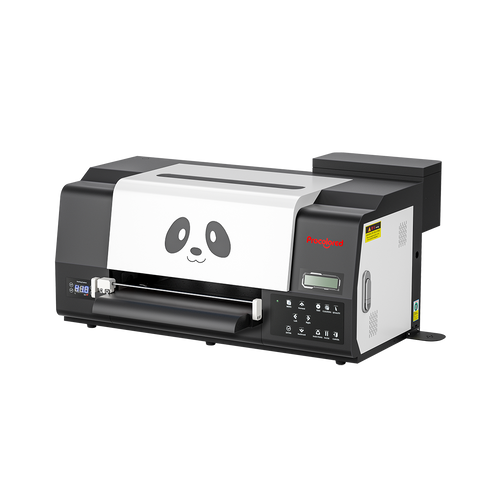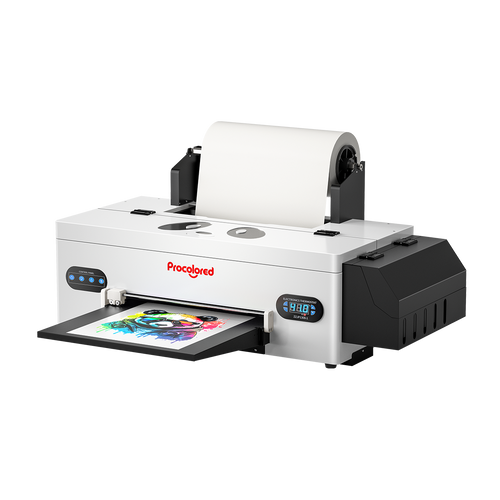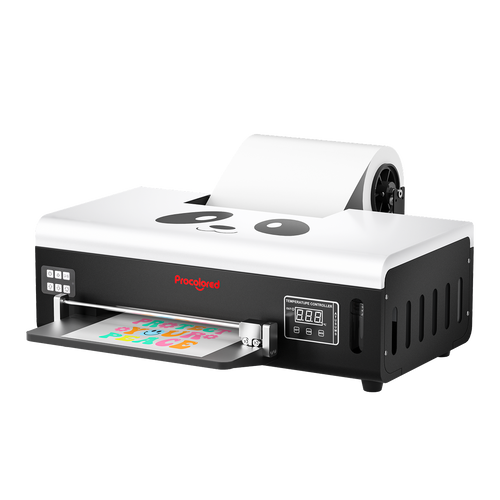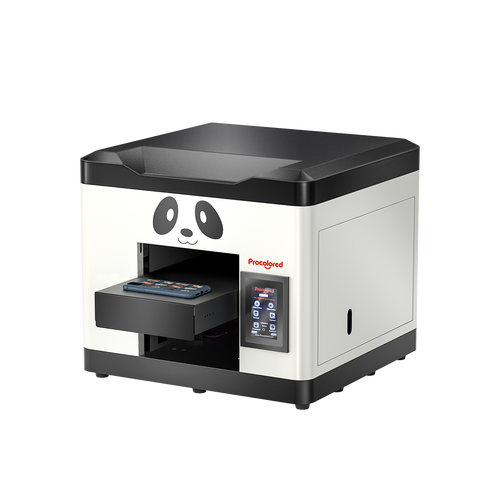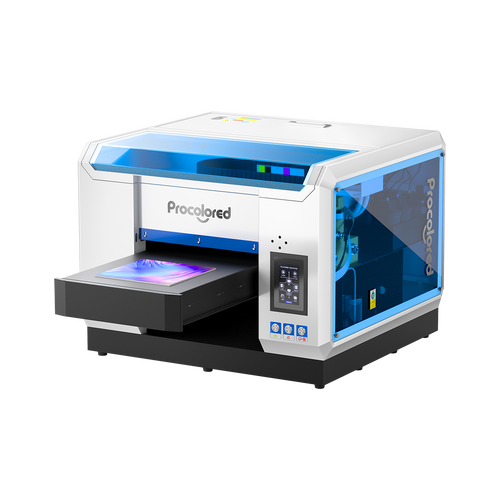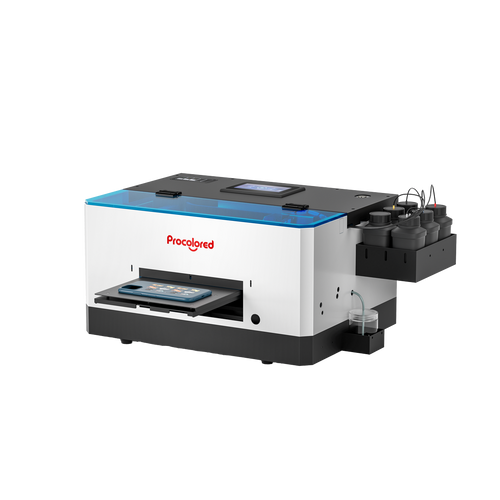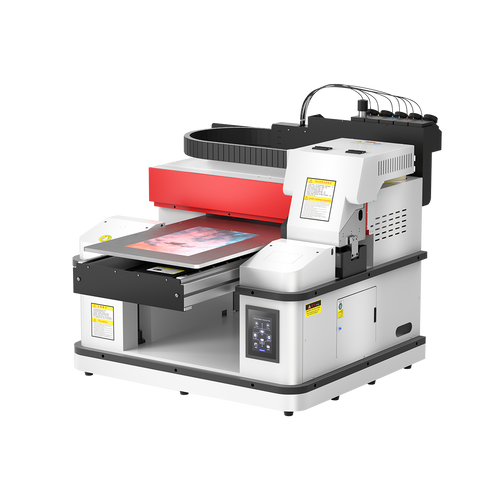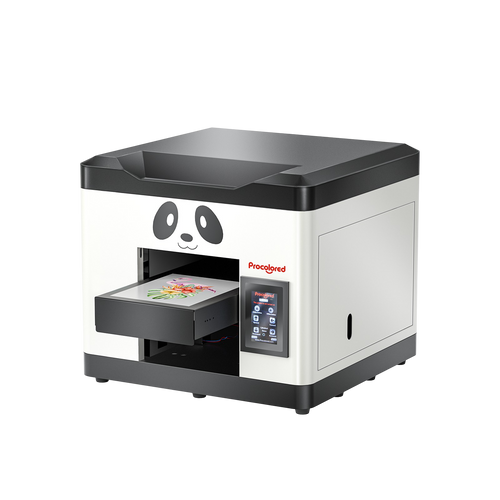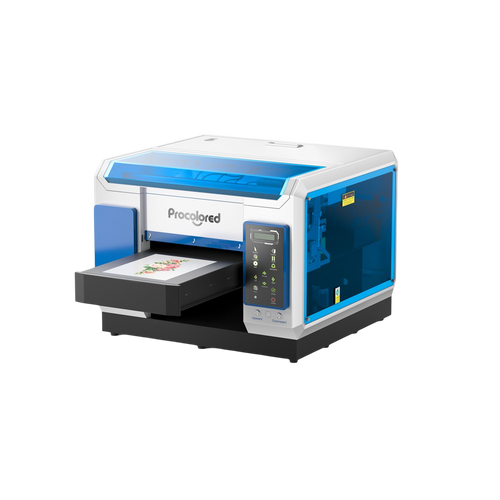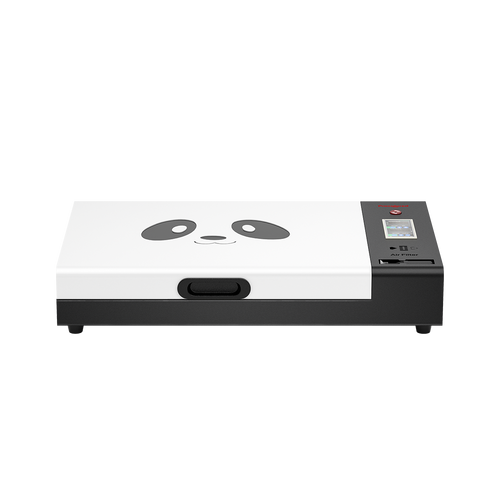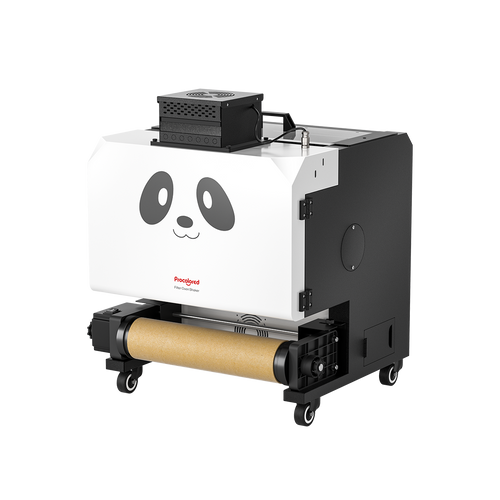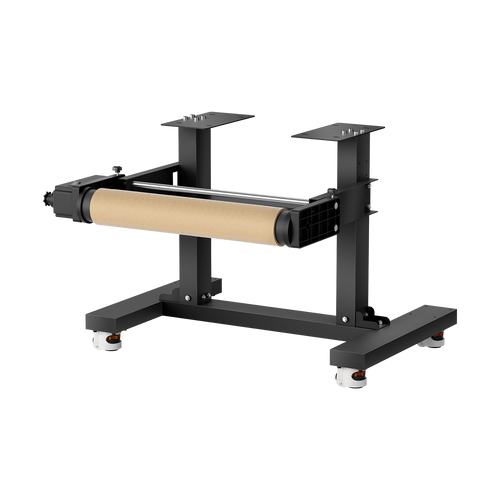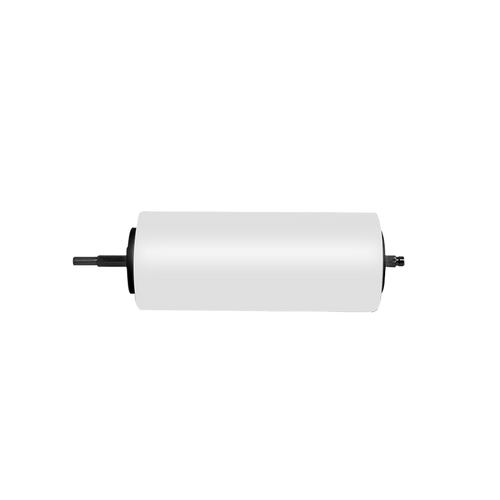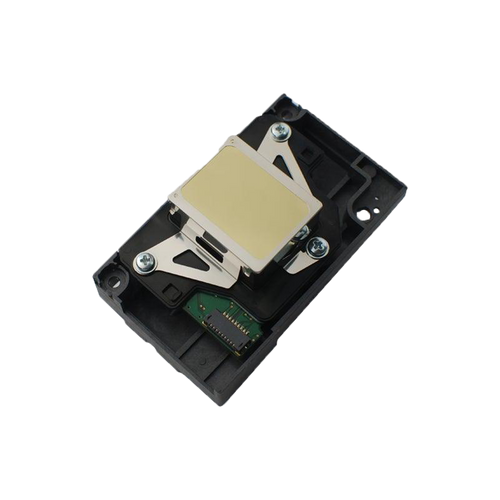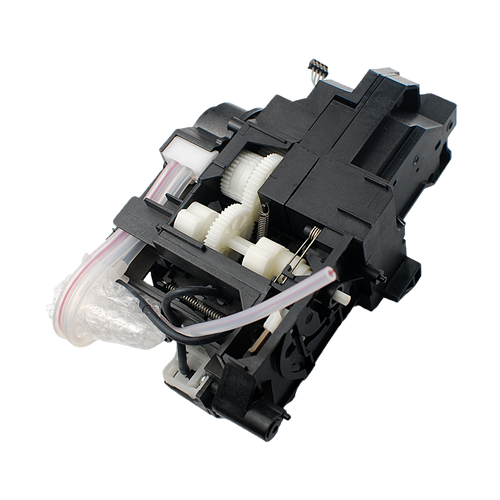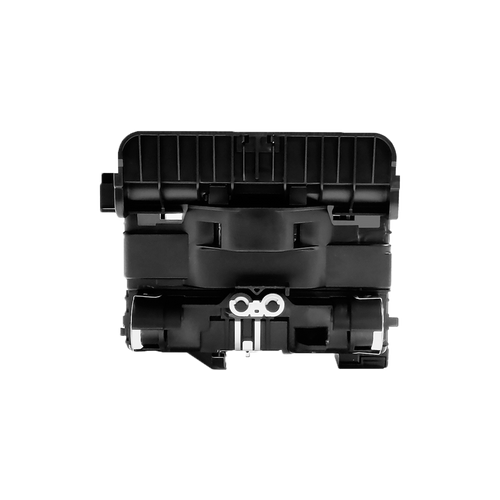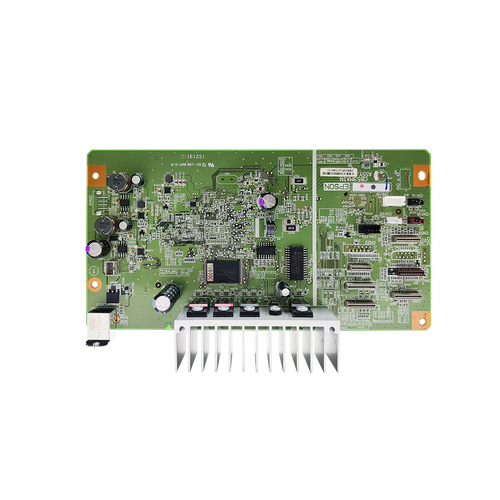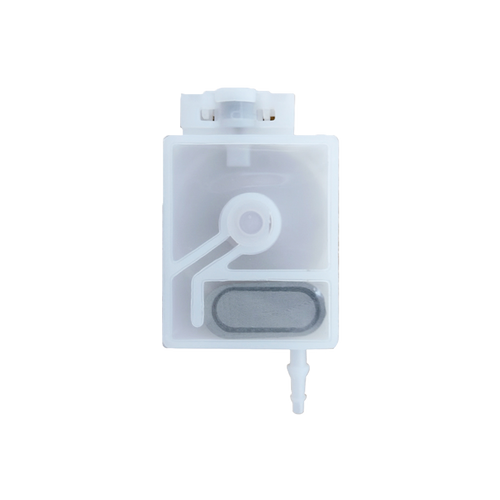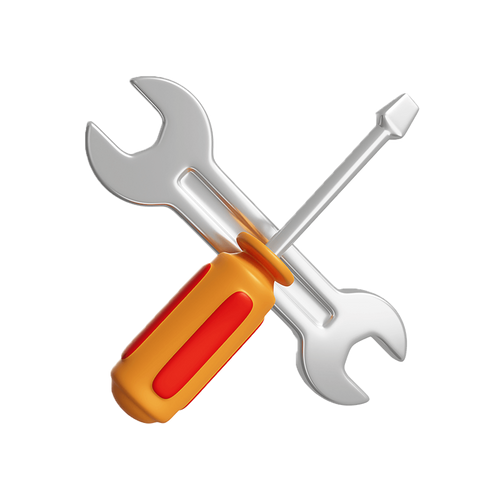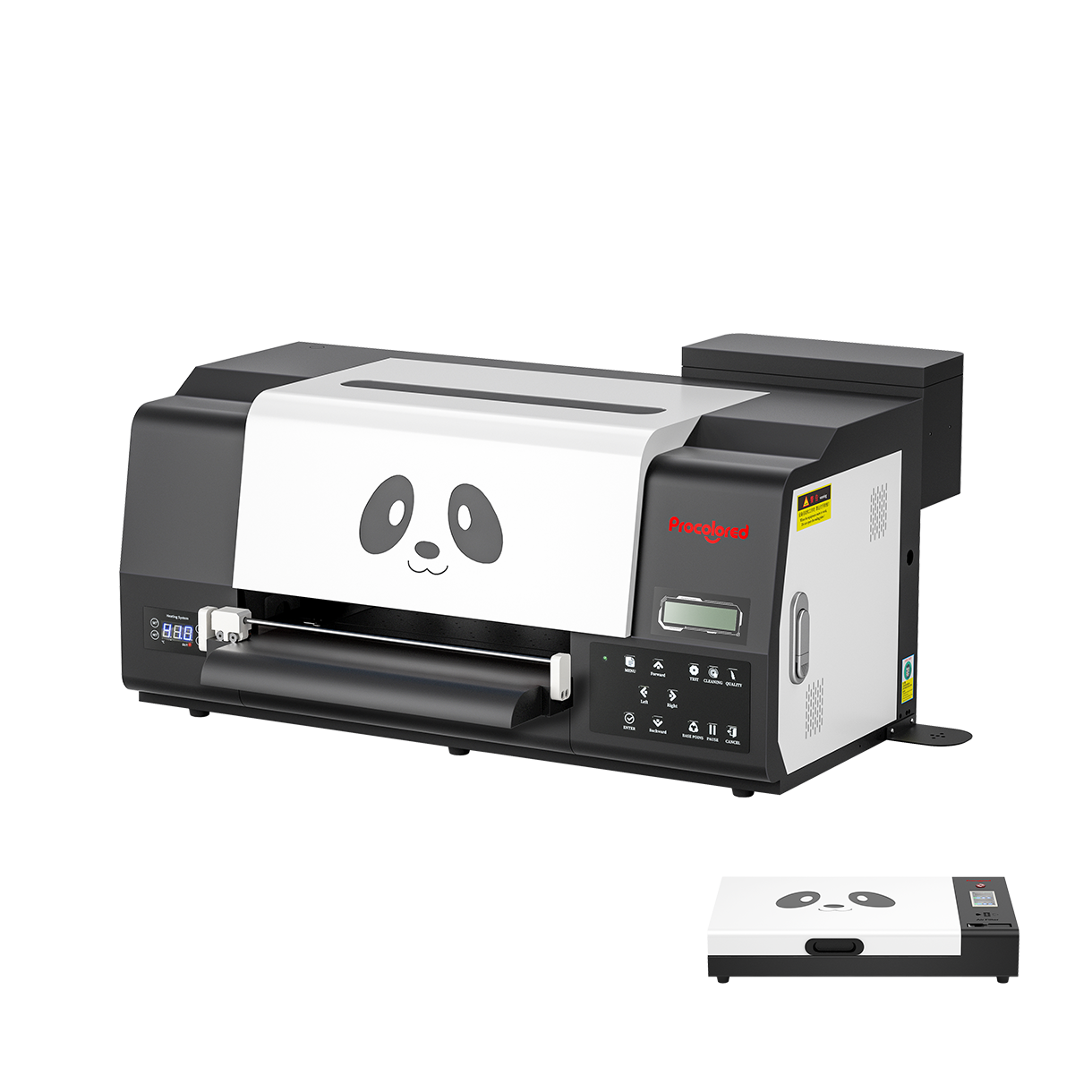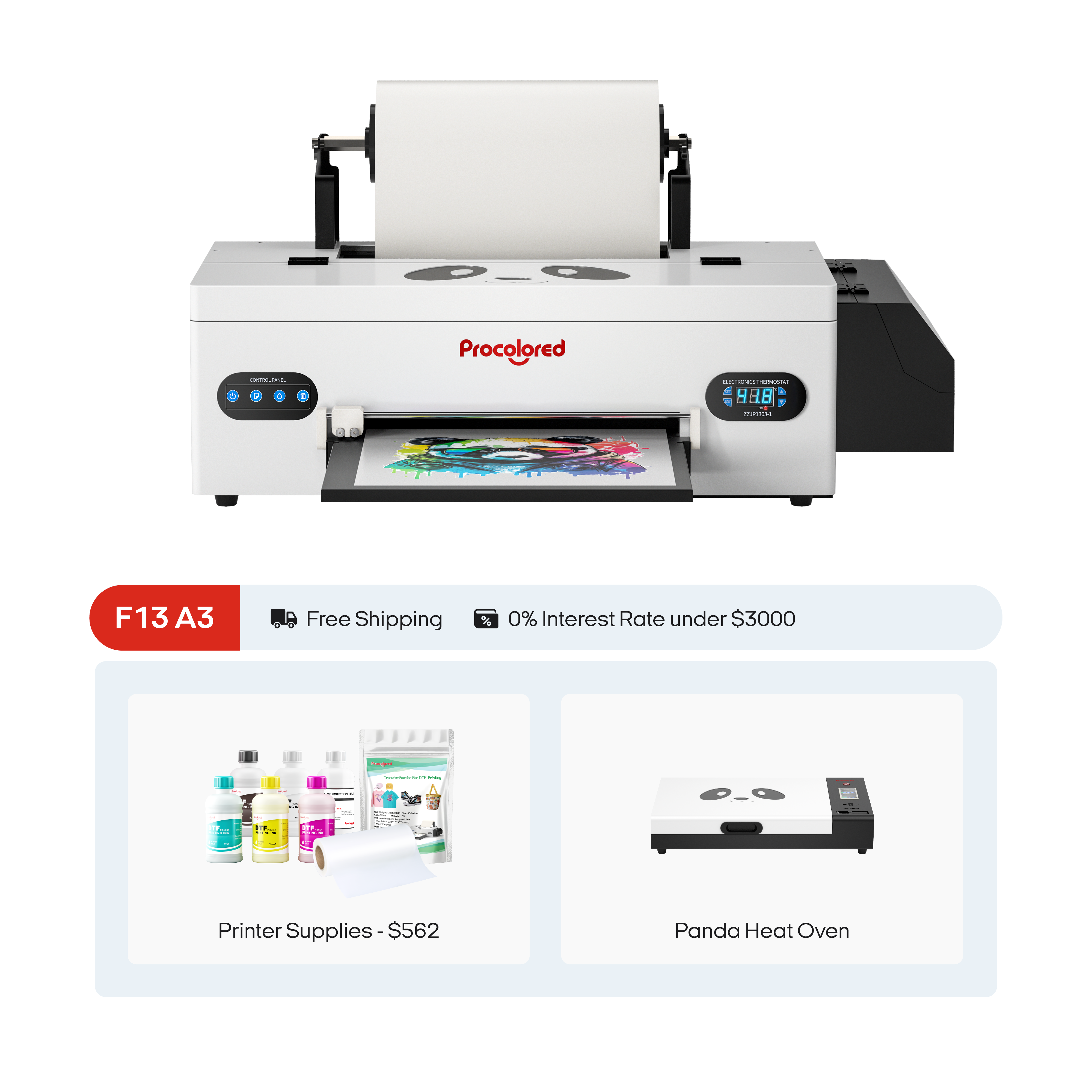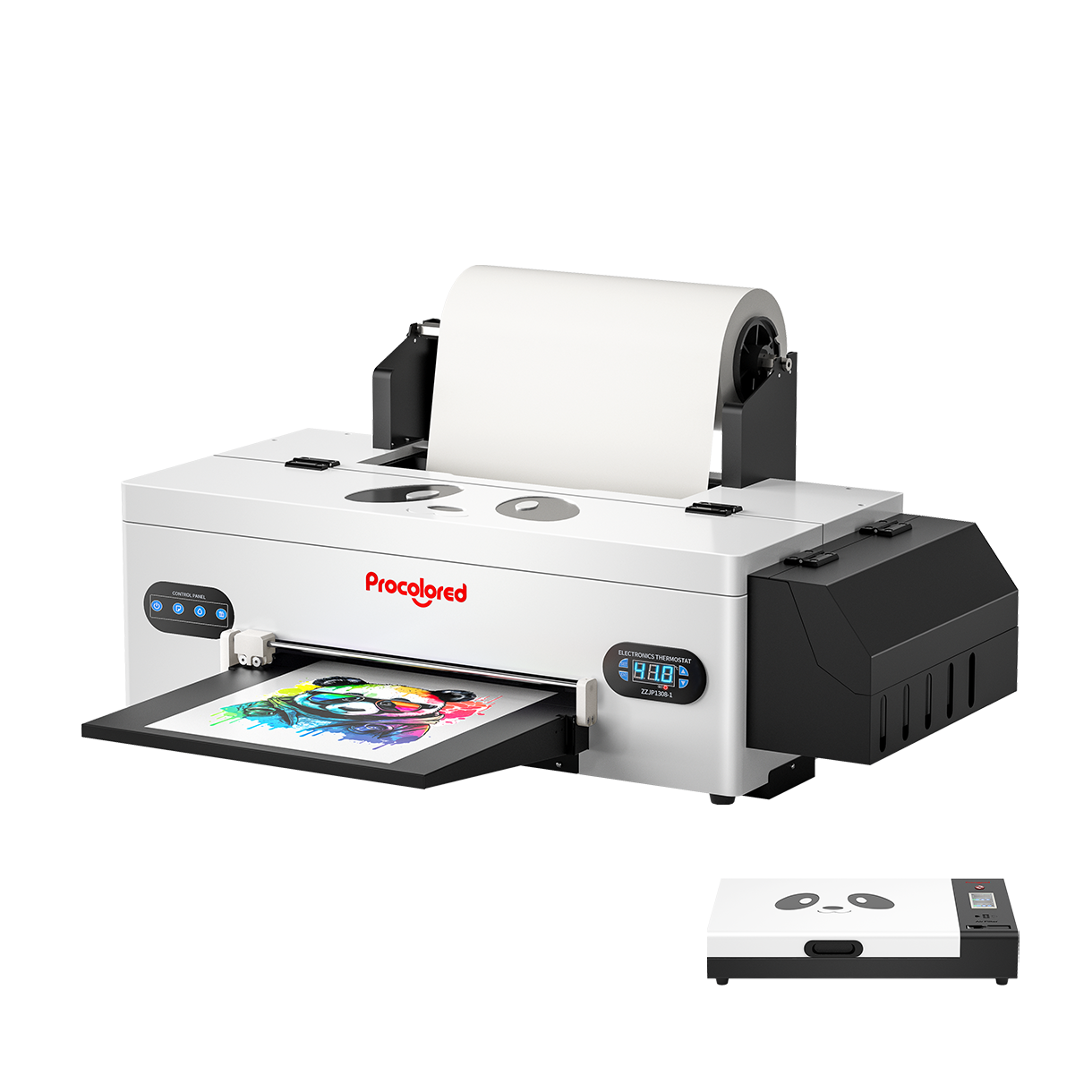Things You Need to Know Before Buying a DTF Printer
What are DTF Printers and what can they do for you?
DTF printers, which are direct to film printers, utilize DTF ink to print on PET film first (different with uv dtf printer). The printed pattern will be transferred to the garment with some necessary steps like being processed by hot-melt powder and heat pressing. The special and innovative printing idea makes DTF printers special and charming so that more and more sublimation and DTG printers users are embracing this new printing technology. DTF printers have overcome the limitation of sublimation printers and DTG printers. Procolored is the best DTG Printer Manufacturer. These two types of printers have one thing in common: they have component restrictions on the substrate. While DTF printers provide long-lasting and durable high-quality printing results and can print on all most all kinds of fabric/leather which sublimation/DTG printers are not capable of. Explore DTG printer for sale to start your T-shirt small business.
This article introduces how to choose a suitable t-shirt printer online and compared mainstream online t-shirt printers. Before buying t-shirts printing machines online, you need to know about the following things.
Different Types of DTF Printers
1. DTF Printers with Roll Feeder
The Roller version means that the film is fed to the DTF printer continuously unless the film of each roll is depleted. Roller version DTF printers are divided into large-size ones and small/media size ones. Small and media size DTF printers are suitable for small business owners with limited space and budget, while factory owners and mass producers are more likely to choose large-size DTF printers because they have a greater demand for production and have greater free cash flow.

2. DTF Printers with Sheet Enter/Exit Tray
Single sheet version means that the film is fed to the printer sheet by sheet. And this kind of printer is usually small/media size because a single sheet version DTF printer is not ideal for mass production. Mass production needs to ensure working efficiency with less manual intervention, while single sheet version direct to film printer may need manual intervention and more care because the way it feeds film is more likely to cause paper jam.

Budget
Factors that Affect on the Price:
1. Applications
The price of a DTF printer largely depends on your application. For different applications, DTF printers are equipped with different technologies. That’s the reason why DTF printers’ prices range from about $2,000 to more than $10,000.
If you’re a medium/small business owner with a limited budget looking for affordable DTF printers, the ones ranging from $2000-$6000 will certainly meet your needs. The final price is depended on your requirement for the DTF printer. For example, if you want the top printing performance, maybe you should choose a better printhead that is more expensive.
If you’re a factory owner looking for the best DTF printer that can achieve mass production with high industrial quality, then large size DTF printers may be your first choice, which is properly more than $10,000.
2. Technologies and Configurations
As mentioned, the utilized technologies and configuration also affect on the price of DTF printers. Here are some useful techniques:
(1) Micro-piezo inkjet technology, which allows accurate images restoration with light/oxidation/water/scratch resistance.
(2) White ink automatic circulation which prevents the nozzle from clogging
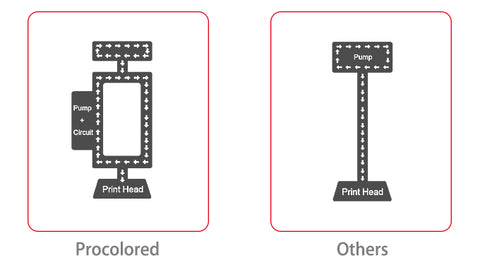
(3) Preheat function.
(4) Temperature and humidity sensor.
The above would be a portion of all the technologies that have been applied to DTF printers, but they are a very important and essential technology for business owners to ensure what they print out is of good quality.
3. Services: after sales/guarantee
The quality of after-sales service and the warranty period affect on the price virtually. These two factors increase the cost of the supplier and finally the cost will be transferred to consumers. But you can also find some conscientious sellers selling their DTF/UV/UV DTF printers at a very reasonable price with a longer warranty and better after-sales services. On the contrary, some are selling their printer at higher prices but with shorter warranty periods and poor services.
Printing Quality
Printing Speed
Many factors affect the printing speed, but the factors we frequently discuss are the DPI(Dots Per Inch) of the pattern and the printhead. Under the same DPI, the better the printhead, the faster it prints. But with the same printhead, the higher the DPI, the slower it prints, because it needs to print the pattern more carefully with high quality.
With the ever-changing needs of consumers, whether the pattern on the garment is light/oxidation/water/scratch resistant and durable will affect their choice. So you should be prudential when choosing the printhead and think about what quality/effect it can print out more carefully.
Comparison with Competitors
Epson R1390\L1800\DX5(optional)
Epson Piez
L1800
DX5: CMYKWWWW(8 Colors)
Full Set of Initial Ink Cartridges(CMYKW 5*100ml)
100PCS A3 PET film
Roller Version:
Full Set of Initial DTF Ink (CMYK+WW 6*100ml)
PET Roll Film
It’s obvious that the Procolored A3 DTF transfer printer offers more flexible choices and reasonable prices but comes with consumables and a better ink supply.
DTF Printing/Sublimation Printing/DTG Printing Comparison
Printing Steps
DTF Printing Steps
- Upload and process your designs/patterns.
- Printing on the PET film.
- Cover the design/ pattern with the hot melt adhesive powder and shake.
- Oven drying.
- Hot pressing process.
- Tear off Pet film and finish transferring.
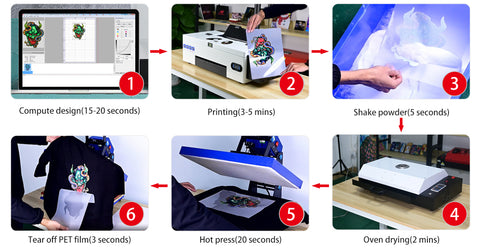
Sublimation Printing Steps
- Set up your image with software.
- Sublimation printing process: print the image on the sublimation paper.
- Set up the heat press machine.
- Heat pressing process.
- Peel off the sublimation paper and finish.
DTG Printing Steps
- Create and upload your design.
- Pretreatment -- Spray pretreatment liquid or utilize a pretreatment machine.
- Dry the garment and position it on the plate.
- DTG printing process.
- Cure the garment with the heat press.
- Finish.
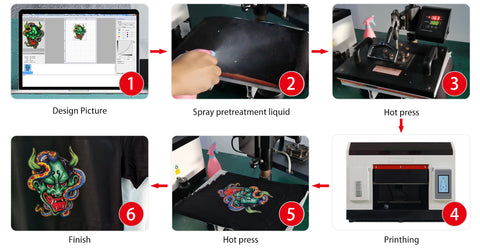
Pros and Cons
DTF Printers
Pros:
- Works on a wide range of garment materials: cotton, leather, polyester, synthetic, nylon, silk, dark and white fabric without any trouble.
- No need for tedious pretreatment like DTG printing -- because the hot melt powder applied in the DTF printing process will help to stick the pattern to the garment, which means that there’s no more pretreatment in DTF printing.
- Higher production efficiency -- because the pretreatment process is eliminated, time is saved from spraying liquid and drying the liquid. And DTF printing requires less heat press time than sublimation printing.
- Save more white ink -- DTG printer requires 200% white ink, while DTF printer only needs 40%. As we all know that white ink is way more expensive than other kinds of ink.
- High-quality printing -- the printing has extraordinary light/oxidation/water resistance, which means more durable. Provides a subtle feel when you touch it.
Cons:
- The sense of touch is not as soft as DTG or sublimation printing. In this field, DTG printing is still on the top level.
- The PET films are not reusable.
Sublimation Printers
Pros:
- The printed pattern enjoys a soft tactile sensation. The pattern and the substrate are in great integration after sublimation. As a result, you can not even feel the pattern, and it will hardly lose its color or be scraped off.
- More substrates choices -- this technology can also be applied to substrates that have rigid surfaces.
- Beginner-friendly -- it takes fewer steps to finish printing and each step is easy to complete, which saves you learning costs.
- Flexible pricing -- a sublimation printer's price ranges from several hundred to thousands, which is more flexible for a small business operating in-home or office.
Cons:
- Substrates requirement: if you print on fabric, it should be 100% polyester or at least 2/3 polyester. Black or dark surfaces can not be sublimated. It requires white or light-colored background.
- Higher costs -- because of the special inks, the costs will be increased. Slower printing process -- although this printing technology is easy to learn, the process takes more time than DTF printing.
DTG Printers
Pros:
- The cost per printing is reasonable, which is friendly to business owners.
- The printed pattern on the garment is more accurate and with more details.
- There is a better touch of the printed pattern because this printing technology integrates the ink directly into the fabric so that it feels just like a part of the fabric.
- A High level of color vibrancy is guaranteed.
Cons:
- Pretreatment is needed before printing, which will cost you more time and lower your production efficiency.
- Longer heat pressing process compared to DTF printing.
- The color will be less vibrant when printing on dark surfaces.
- Polyester garments like some sports shirts are not suitable for DTG printing. This printing technology recommends the substrate contains 80% cotton.
Substrates
Mainly prints on fabric and leather but without component restriction.
Sublimation Printers:
Polyester, or at least 80% polyester.
Hard surfaces with a special polyester coating.
DTG Printers:
Mainly prints on fabric that is made of (at least 80%) cotton.
Conclusion
DTF printers allow you to print on various substrates such as T-shirts made of all kinds of material, souvenirs, and so on with relatively lower prices, which is more beginner-friendly because it takes fewer and simpler steps to finish printing. DTF printers also provide what you see is what you get printing experience.
However, if you have strict requirements on the texture of the printed pattern, perhaps sublimation/DTG printers are more suitable for you. The tactile impression of these two printing technologies is better at the cost of a more time-consuming printing process. Plus, if you want to print out an extraordinary pattern with DTG printers, you need to have a rich color mixing experience.
Before making a purchase decision, you also need to consider some core technical parameters such as max printing resolution of the printhead, printing width, printing speed, and so on.
There are still some other points that will affect your decision:
- If you need to buy special ink from a specific manufacturer?
Only certain types of inks are suitable for DTG printing. Sometimes it’s hard to find a supplier that can satisfy your needs with the right types of inks and colors.
- If the seller provides product maintenance and caring methods?
Some sellers are just responsible for selling you printers but they don’t have the professional knowledge to offer you suggestions on how to protect the printer. Although you may find the answer online, nobody can guarantee that what netizens say is right. Fortunately, the printer maintenance and caring methods are included in the manual we provide.
- How’s the after-sales service quality?
Some of our competitors only provide a guarantee period from 30 days to 6 months. While we offer you 3-year-guarantee. And we have professional engineers to help and give you solutions when you’re in need.
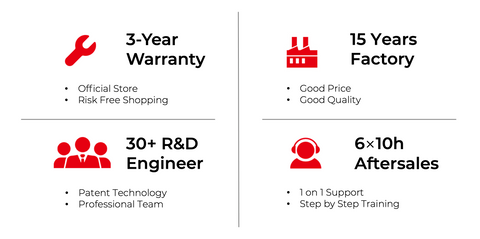
If you are looking for an affordable, cost-effective DTF printer, Procolored 17" Single Head A3 DTF Transfer Printer is an ideal choice. As the comparison table above shows, our A3 DTF Printer comes with consumables and offers you more printhead choices at reasonable prices, which other competitors are not capable to offer but with more expensive prices. At the same time, we also offer professional advice from engineers if you have any questions, 3-year-guarantee, and 6*10h after-sales services.
After reading this article, if you think DTG printers are a suitable choice for you, we can also meet your need. Welcome to send us messages to consult.

